A recession looks unlikely: Pete Wargent
The Australian National Accounts recorded that real GDP growth came in at a seasonally adjusted -0.5 percent for the third quarter and +1.8 percent for the year.
Oops.
This was the first negative quarterly result for GDP since the Queensland flood-affected quarter of March 2011, and only the fourth such result since Australia's last recession in 1991.
With a negative contribution of -0.2ppts net exports were a drag on growth this time around, and there was a big drop in public capital expenditure (for a contribution of -0.5ppts) after a surge of government investment last quarter, summarily in helicopters, healthcare, and hepatitis drugs.
Household consumption contributed 0.3ppts to growth this quarter, but there wasn't much joy elsewhere.
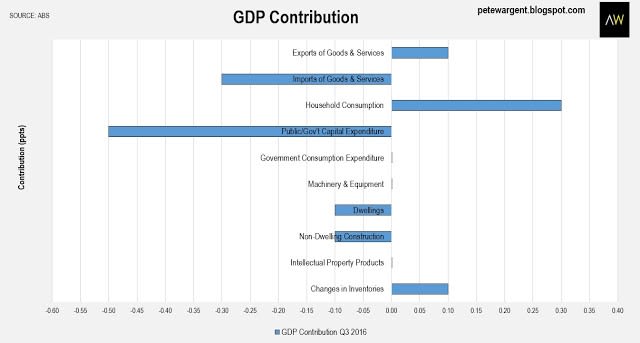
With downward revisions to previous quarters, this takes annual GDP growth all the way down to +1.8 percent.
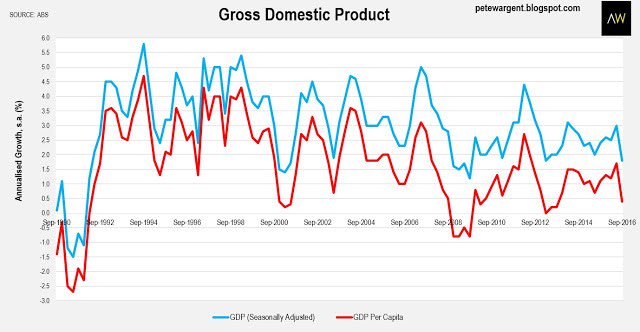
Nominal GDP fared somewhat better, growing by +0.5 percent in the quarter, and by +3 percent over the year.
Income boost
It's often been pointed out that in a country such as Australia with its volatile bulk commodity prices, real GDP isn't always an ideal measure of how things are tracking.
In this quarter, for example, there was a large +4.4 percent jump in the terms of trade, meaning that the index is now up by +1.4 percent over the past year.
Given that the terms of trade index has been falling since Q3 2011, this is hugely welcome news!
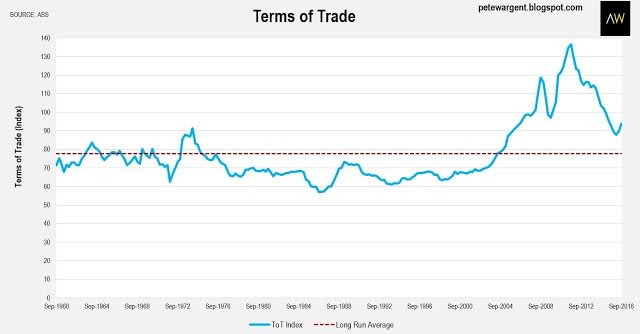
Behind the scenes, of course, commodity export volumes have been ramping up over time.
Thus while real GDP contracted, real gross national income, real gross disposable income and real net national disposable income all rose to record highs in the September quarter, and we can expect to see further gains in Q4.
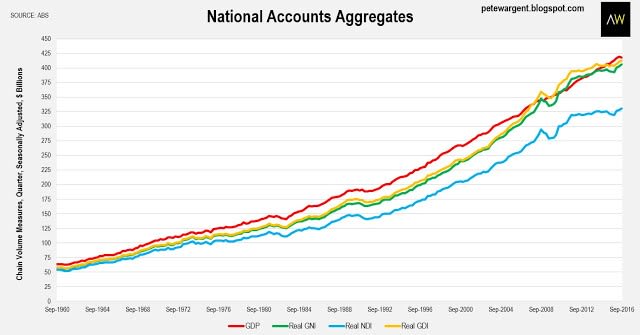
In real terms, gross national income increased by +0.9 percent over the quarter and +3.2 percent over the year.
Essentially, then, this this quarter has been the mirror image of the dynamics we've seen in previous quarters, shifting to strong income growth and weaker GDP growth.
Two-speed
Research by SGS Economics and Planning has shown that Sydney and Melbourne have beendominating economic growth, while many regional economies are presently running slower as they adjust to life post-resources boom.
State final demand was very weak in Western Australia at -3.8 percent as capex continues to work through its decline.
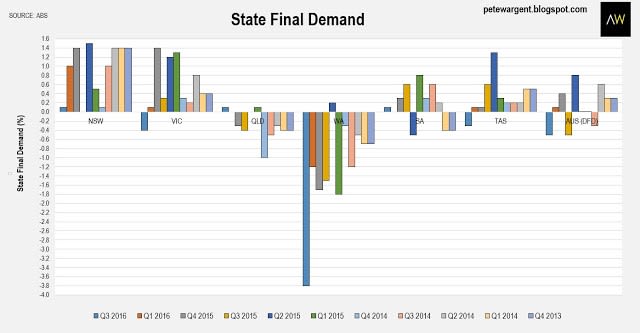
At the industry level, construction was the biggest loser, contracting by -3.6 percent, and swiping some -0.3ppts from GDP growth.
Compensation of employees grew by +1.3 percent over the quarter and a positive +3.1 percent over the year, while the household savings ratio ticked down to 6.3 percent.
I'll look at the impact on household incomes and expenditure in a separate post.
The wrap
After 100 consecutive quarters without a recession, the economy posted a negative GDP result for the third quarter, but real national income measures surged to a record high.
whether or not we experience a technical recession next quarter is open for debate, but it looks to be unlikely based on the recent growth in retail spend.
Overall, strong public investment figures in the first half of the year masked a softening underlying trend in growth in the economy.
An annual GDP growth figure of +1.8 percent feels much more in line with the metrics we've seen elsewhere, including low employment and wages growth, soft inflation, and a budget in deficit.
If hours worked are said to be the best measure of the health of the economy, then the conclusion is clear: the economy stuttered in the first half of 2016, although there was at least a moderate improvement of +0.5 percent in Q3.
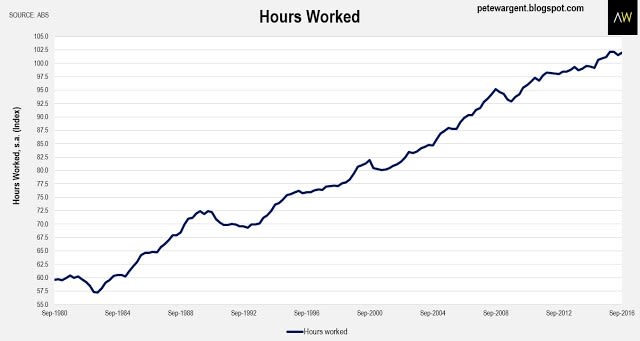
In the face of an obviously weaker result, a key question for the government now is whether it uses low yields to borrow and invest in infrastructure, as the Reserve Bank doesn't sound particularly keen on cutting the cash rate too much further!
PETE WARGENT is the co-founder of AllenWargent property buyers (London, Sydney) and a best-selling author and blogger.
His latest book is Four Green Houses and a Red Hotel.
Pete Wargent
Pete Wargent is the co-founder of BuyersBuyers.com.au, offering affordable homebuying assistance to all Australians, and a best-selling author and blogger.
